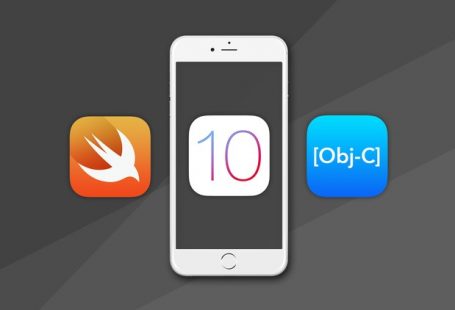Contents
If the premium is $2 per share and the call option is for 100 shares at $60, the investor would pay a $200 premium for this transaction. Call options have been in the news lately, as many investors have taken advantage of the surge in price of stocks such as Gamestop and AMC. Understanding call options and how they work can help investors make savvy investment decisions. Here’s how to determine if this investment strategy is right for you. Calls with a strike price of $50 can be sold for a $5 premium and expire in six months.
- This article provides an overview of why investors buy and sell call options on a stock, and how doing so compares to owning the stock directly.
- Options don’t have any intrinsic value, but derive their value from their underlying asset; hence, they are called financial derivatives.
- If the stock remains below the strike, they can keep the premium and try the strategy again.
- For a relatively small upfront cost, you can enjoy a stock’s gains above the strike price until the option expires.
Then you could exercise your right to buy 100 shares of the stock at $30, immediately giving you a $10 per share profit. If the stock rises above $115, the option buyer will exercise the option, and you will have to deliver the 100 shares of stock at $115 per share. You still generated a profit of $7 per share, but you will have missed out on any upside above $115.
Finally, notice that the up sloping line become profitable at $42, which is the strike price of $40 plus the $2 cost of buying the option. Theoretically the stock price can go to infinity so that is why they say the earnings from owning a call option are unlimited. A call spread strategy involves buying and selling an equal number of call option contracts on the same underlying security.
If you’ve sold a covered call, meaning you own the shares, you could be selling those shares at a heavily discounted price compared to the market and foregoing a big profit. In our made-up example, when the McDonald’s shares, which is the underlying stock, start to trade at $50, the option contract is in the money since it is above the strike price of $40. The higher the stock rises above $50, the more ITM and intrinsic value it has. Covered calls, credit spreads etc are limited risk strategies and are preferred over naked calls . I repeat, selling call options without hedge has potential for unlimited losses.
Writing Puts to Purchase Stocks
But on rare occasions, the call buyer still might decide to exercise the option, so the stock would have to be delivered. This situation benefits the call seller, though, since the stock would be cheaper than the strike price being paid for it. For the stockholder, if the stock price is flat or goes down, the loss is less than that of the option holder.
If a stock is trading at $60 per share, you may predict that the price will rise in the near future. While you could purchase 100 shares by paying $6,000, you could also buy a call option that would allow you to buy the stock at $63 per share within the next two months. This option could cost an investor a premium of $1.75 per share or $175, based on the current state of the market.
So don’t plan on an off day on a market day and always have backups/fallbacks. Sooner or later, if the price keeps going up you will reach the point where you can’t keep writing calls and margin calls can happen. You wrote a call, the call price dropped and you are looking at a healthy profit. Leverage can lead to impressive gains and unimaginable losses. As soon as price of stock is above Strike Price + Premium received you start loosing money.
What Does the Call Option Seller Get and at What Cost? 💸
When you buy a call option, you’re buying the right to purchase shares at the strike price described in the contract. You’re hoping that the stock’s price will rise above the strike price of the option. If it does, you can buy shares at the strike price, which is lower than the current market price, and sell them immediately for a profit. A call owner profits when the premium paid is less than the difference between the stock price and the strike price at expiration.
The buyer decides to buy a call option after ensuring that a company’s stock value will rise in the future. Next, investors enter into the contract to be settled on a future date at a fixed strike price, anticipating a price rise in the future. Finally, the brokerage firm matches them with the seller with similar preferences for further processing. If the stock finishes between $20 and $22, the call option will still have some value, but overall the trader will lose money. And below $20 per share, the option expires worthless and the call buyer loses the entire investment. If the stock price is below the strike price at expiration, then the call is “out of the money” and expires worthless.
Buying A Call Option
Call options are frequently used for speculation purposes and may comprise a part of various options trading strategies. The financial products offered by the company carry a high level of risk and can result in the loss of all your funds. You should never invest money that you cannot afford to lose. Call option and Put option are the two main types of options available in the derivatives market. BearishBearish market refers to an opinion where the stock market is likely to go down or correct shortly. It is predicted in consideration of events that are happening or are bound to happen which would drag down the prices of the stocks in the market.
A call option is covered if the seller of the call option actually owns the underlying stock. Selling the call options on these underlying stocks results in additional income, and will offset any expected declines in the stock price. The seller’s profit in owning the underlying stock will be limited to the stock’s rise to the option strike price but he will be protected against any actual loss. Investors can benefit from downward price movements by either selling calls or buying puts. The upside to the writer of a call is limited to the option premium.
Buying Call Options
The offers that appear on this site are from companies that compensate us. This compensation may impact how and where products appear on this site, including, for example, the order in which they may appear within the listing categories. But this compensation does not influence the information we publish, or the reviews that you see on this site. We do not include the universe of companies or financial offers that may be available to you.
This in turn influences the price a buyer is willing to pay for the option. Options also provide a means from protecting against market risk. Therefore, buying a call option can also indicate that the investor wishes to shield themselves and minimizes their losses from decline in the value of their stock portfolio.
Leverage using Calls, Not Margin Calls
They profit from the difference between the current selling price of the stock and the original purchase price. Call options have the promise of providing potentially unlimited profits while also managing to limit losses incurred . When that happens, the call option is said to have intrinsic value. When the stock price how to read a candlestick chart reaches or exceeds the strike price, the call option buyer has two options available. She can sell the option for a profit — which is usually the default action most call option buyers take. Selling call options, without owning the underlying or hedging, is an unlimited loss trade with a capped maximum profit.
Call options are like the swiss army knife of investment instruments for stock brokers. They are multilayered and able to adapt to the simplicity or complexity of your investment strategy. It usually works by placing your call option opposite the position of the underlying stock or security. The intent is to reduce or limit the number of potential losses from the stock in the event of unforeseen circumstances. Mostly adopted by larger investors who use call options as a way to hedge their stock portfolios and increase their marginal revenues. The holding position may vary from a couple of weeks to several years.
A short call investor hopes the price of the underlying stock does not rise above the strike price. If it does, the long call investor might exercise the call and create an “assignment.” An assignment can occur on any business day before the expiration date. If opteck opteck broker it does, the short call investor must sell shares at the exercise price. A “long call” is a purchased call option with an open right to buy shares. For example, an investor may own 100 shares of XYZ stock and may be liable for a large unrealized capital gain.
Regardless, stock trading in general can be stressful and can take its toll. Pay 20% upfront margin of the transaction value to trade in cash market segment. Please ensure you carefully read the risk Disclosure forex algorithmic trading strategies Document as prescribed by SEBI. Please ensure you carefully read the risk Disclosure Document as prescribed by SEBI/FMC. If you expect the price of Reliance Industries to increase to Rs 2,000.


